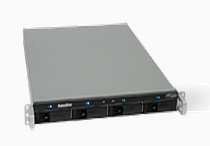Every year, technology and science offers new ways to communicate and perform complicate actions. Internet small computer system interface (ISCSI) is the latest development in data sharing online through Internet Protocol (IP).

Image credit-PrimeArray
ISCSI is predominantly used now to allow different storage facilities to easily connect and share data through the internet. It was created by the brilliant Internet Engineering Task Force. The ISCSI allows users to send SCSI commands through IP networks. ISCSI is primarily used to facilitate transfer of data in intranet networks. This also means that data storage facilities can be managed remotely from another location.
The upcoming storage area network market has been found dependent on the ISCSI data storage solution. This is due to enhanced capabilities of ISCSI in data transmission. With the prevailing use of IP networks, the ISCSI can easily allow transfer of data over local area networks, wide area networks and the internet. It also seems appealing due to the fact that it can offer users data storage that is location-independent.
How ISCSI works
The real question now is, “How does an ISCSI work?”. It is quite an easy concept to understand. Whenever a user sends requests, the operating system creates an SCSI command. This command is then passed through encapsulation. In cases where data is sensitive, it can also go through encryption. Next, a packet header is added to this transmission. The header is added well before the IP packets are sent over the Ethernet connection.
When this packet reaches its destination, it goes through a decryption process and analysis. The SCSI commands are separated from it. Once separated, the SCSI commands are sent to the controller of SCSI commands and then to the SCSI storage device. Since it is bi-directional, the protocol allows the data to be returned to the original sender, as well.
ISCSI has become one of the two foremost approaches to data transfer. The Fiber Channel over IP (FCIP) is the other one. The FCIP allows data transfer through fiber channel control codes that are passed through IP Packets over different locations. FCIP is also known among experts as “Fiber Channel Tunneling” and storage tunneling. Nowadays, most of the popular vendors are offering ISCSI products. These vendors include Cisco, IBM and Nissan, showcasing its popular demand and need.
Advantages of ISCSI
There are numerous advantages tousing ISCSI over other networking and data transmission alternatives. Organizations need a cheaper solution to everything without compromising value. ISCSI seems to be just that.
The foremost advantage that everyone enjoys is the fact that it is considerably cheaper than alternatives. When compared to traditional fiber channel SAN port, the ISCSI offers savings amounting to$1200 per port. The factthat it offers the most value to users forthe lowest cost is not only its greatest advantage but also its most alluring characteristic.
ISCSI is a new technology, but it is not so different from the ones existing already. It is based on similar guidelines and technologies that allow others to easily incorporate it. New users of ISCSI won’t have to strenuously study new concepts or bring intechnical experts. They don’t have to mingle with concepts like buffer-to-buffer credits or VSANs.
ISCSI storage solution offers connectivity over large distances. The abilityto control and manage your databases remotely over long distances is incredibly appealing. This translates intobetter space management at offices. Data servers and other large equipment don’t have to be near workplaces and can be placed somewhere else. Companies need function over comfort. They like the idea that they can have SCSI for their employees and don’t have to get conventional NAS storage. When it comes to distance, ISCSI is the best solution out there. This cannot be said about other data transmission options like fiber channel.
ISCSI has many advantages and numerous uses. It is cost effective and ideal for large entities sprawled over a large geographical area. It offers greater speeds in data transmission and, above all else, is not complicated. This allows it to become the foremost option when it comes to data transmission and data storage. Its security protocols are difficult to break, ensuring efficient data transfer without any risk of being tampered with or hacked.
Author bio:
Michael Adams is a data storage expert based in Washington D.C. He has ample experience in database management and how to create effective data transmission networks. Gathered here is his knowledge and introduction to the wonderful ISCSI storage option.
